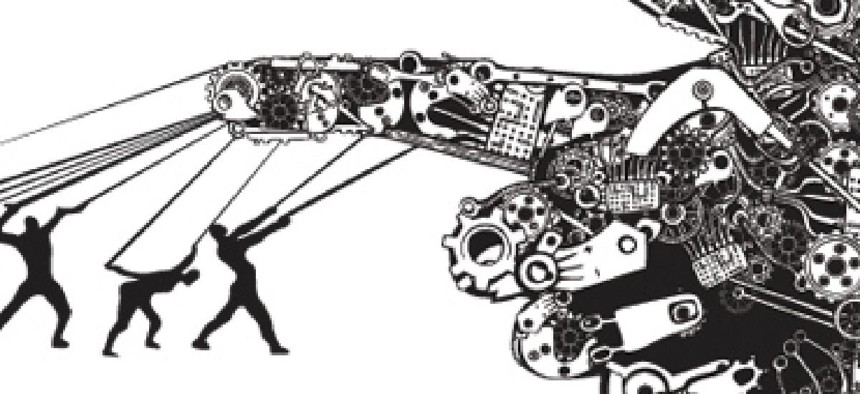FITARA: The view from inside agencies

The front-line leaders implementing FITARA say that centralizing IT acquisitions takes coordination and focus -- as well as executive-level support.

Implementing the Federal IT Acquisition Reform Act has involved a good deal of top-down policy activity. But down in the bowels of agencies, IT leaders must figure out how to actually make it work.
Executing IT management plans under FITARA rules is a matter of patience, data governance, and organization, according to some of the agencies in the forefront of implementing the new rules.
Tighter, more-coordinated IT management at the CIO level "isn't universally embraced," said Richard McKinney, CIO at the Department of Transportation in a keynote at a FITARA implementation symposium on Oct. 22 in Arlington, Va. hosted by the Association for Enterprise Information. It takes some dedicated effort to get it done, he said.
The Department of Agriculture also took an enterprise approach to the new law, establishing a dedicated FITARA office in early October to wrangle the intricate organizational and procedural details to put its plan to work.
Flip Anderson, deputy associate CIO for Information Resource Management at USDA, has been leading the FITARA implementation effort, and currently is the office's sole dedicated employee. The agency is looking for additional volunteers from within its ranks to bring on board, Anderson told FCW.
Joyce Hunter, USDA Deputy CIO, said OMB told her agency that its plan was one of the best submitted by federal agencies at the initial plan deadline in the summer. The department is working to flesh out some of OMB's suggestions ahead of the Dec. 31 plan implementation deadline.
The USDA plan harnesses multiple internal teams working on various aspects of implementation , from writing technical specifics, reviewing policy work and looking to future FITARA compliance and audits, Anderson said. The department's detailed, step-by-step plan, he explained, includes extensive cooperation and collaboration with agency chief executives to make sure they're comfortable with the process.
Getting various agency chief executives on board with FITARA compliance is key, McKinney agreed. To get them completely on board, "you have to appeal to higher angels," he said. "If [the agency] CIO is to be held accountable for shared services, cybersecurity, data centers" and overall IT operations without the commensurate authority, he said, "I'll fail."
As agencies move forward on FITARA plans, Kirsten Dalboe, Program Manager for the Department of Homeland Security's Management Cube data analytics operations, said a baseline understanding of operational data, from human resources to IT assets, is crucial.
In her presentation at the conference, Dalboe outlined DHS' "Management Cube" enterprise data warehouse that aggregates the agency's management data, allowing it to be commonly used across the agency's 13 components.
Common definitions of systems and even basic IT terms across agencies are critical to gathering and reporting out management, procurement and IT data, she said. Terms whose meaning is assumed in one agency could be completely alien to another component, resulting in unusable or inaccurate data.





